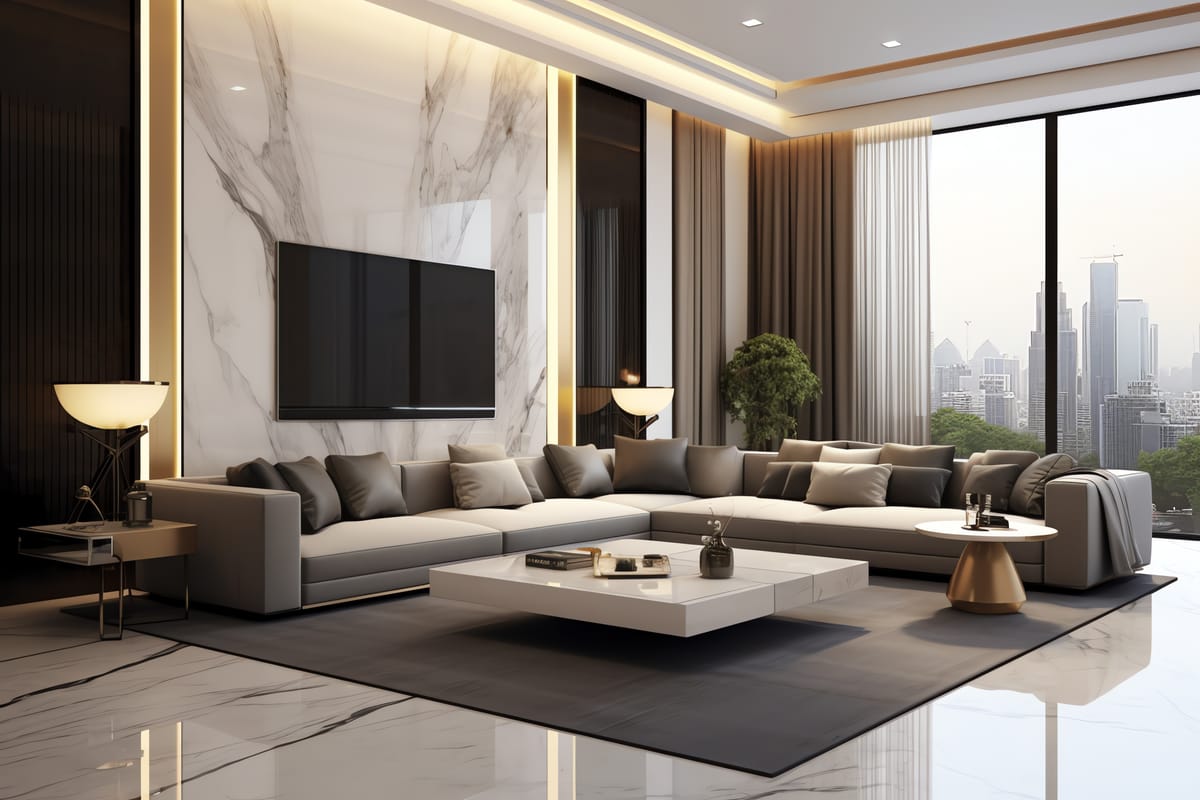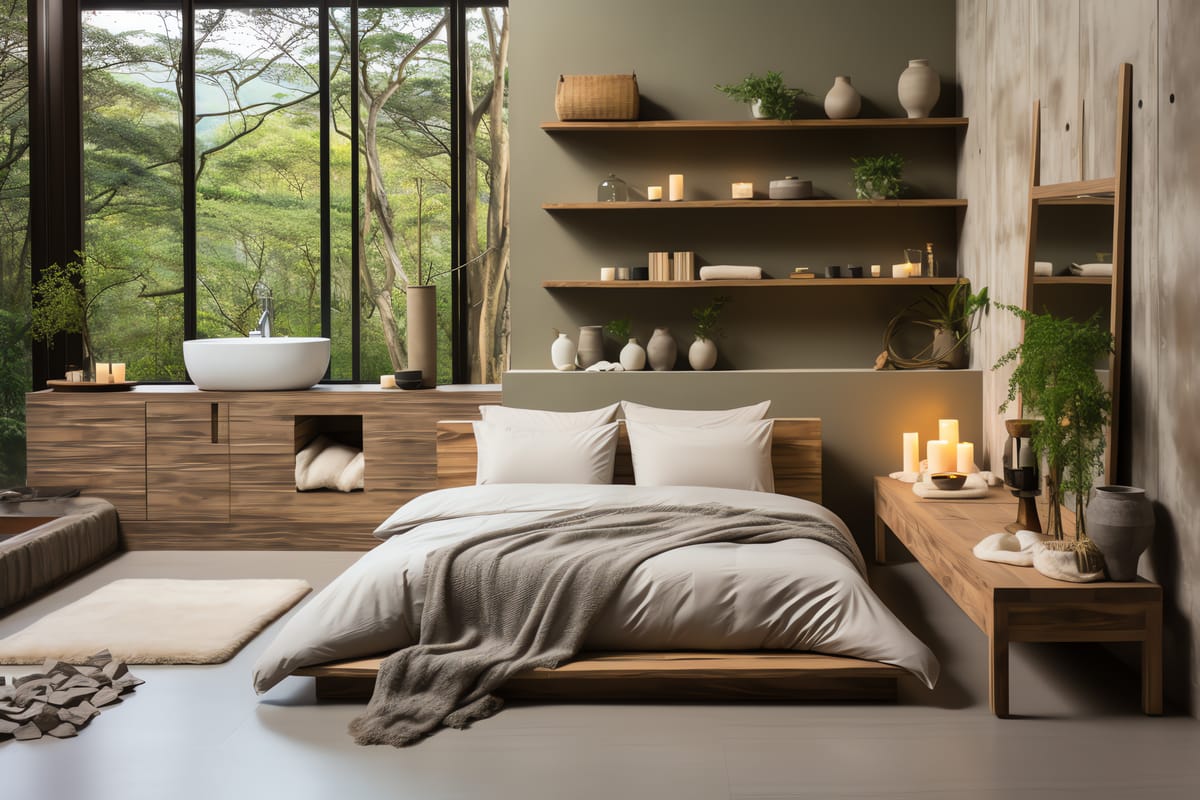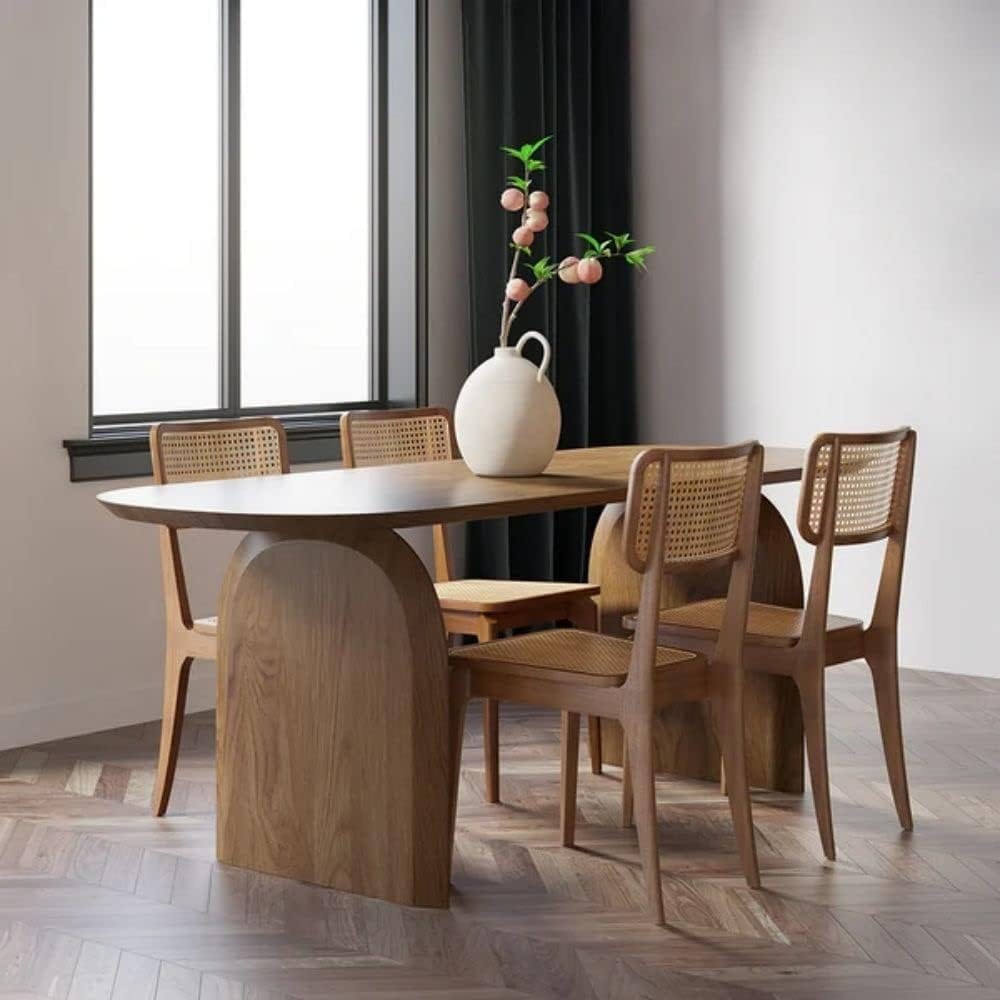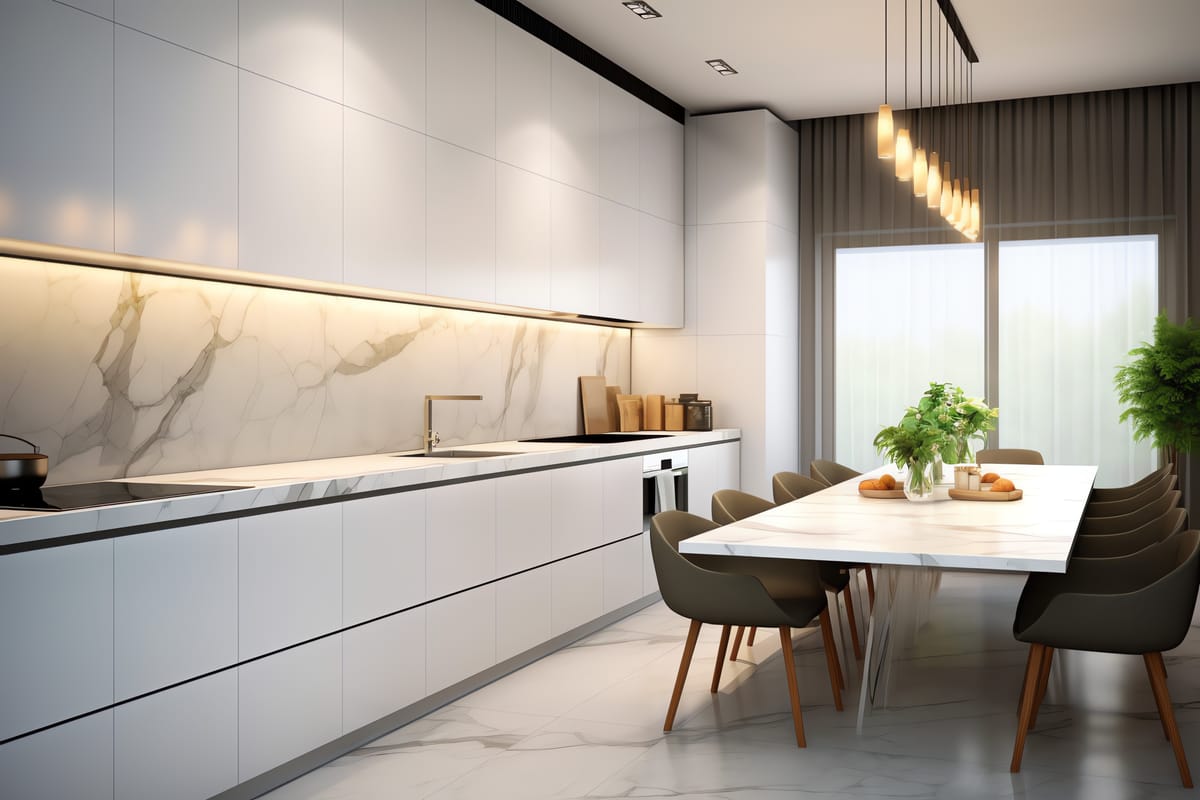Key Takeaways:
- Japandi interior design is a harmonious blend of Japanese and Scandinavian aesthetics, focusing on minimalism, natural elements, and a cozy atmosphere.
- Incorporating Japandi style into your home involves using a neutral color palette, natural materials, and clean lines to create a functional yet warm space.
- Japandi's design philosophy emphasizes the beauty of simplicity and the importance of a connection with nature, often seen in the use of large windows and organic textures.
Japandi interior design is a trend that has been capturing the hearts of design enthusiasts around the globe. This unique style is a blend of two distinct design philosophies: the minimalistic and functional approach of Scandinavian design and the elegant simplicity of Japanese interiors. The result is a look that is both modern and timeless, providing a serene and cozy atmosphere that is perfect for today's fast-paced world.
The Essence of Japandi Design
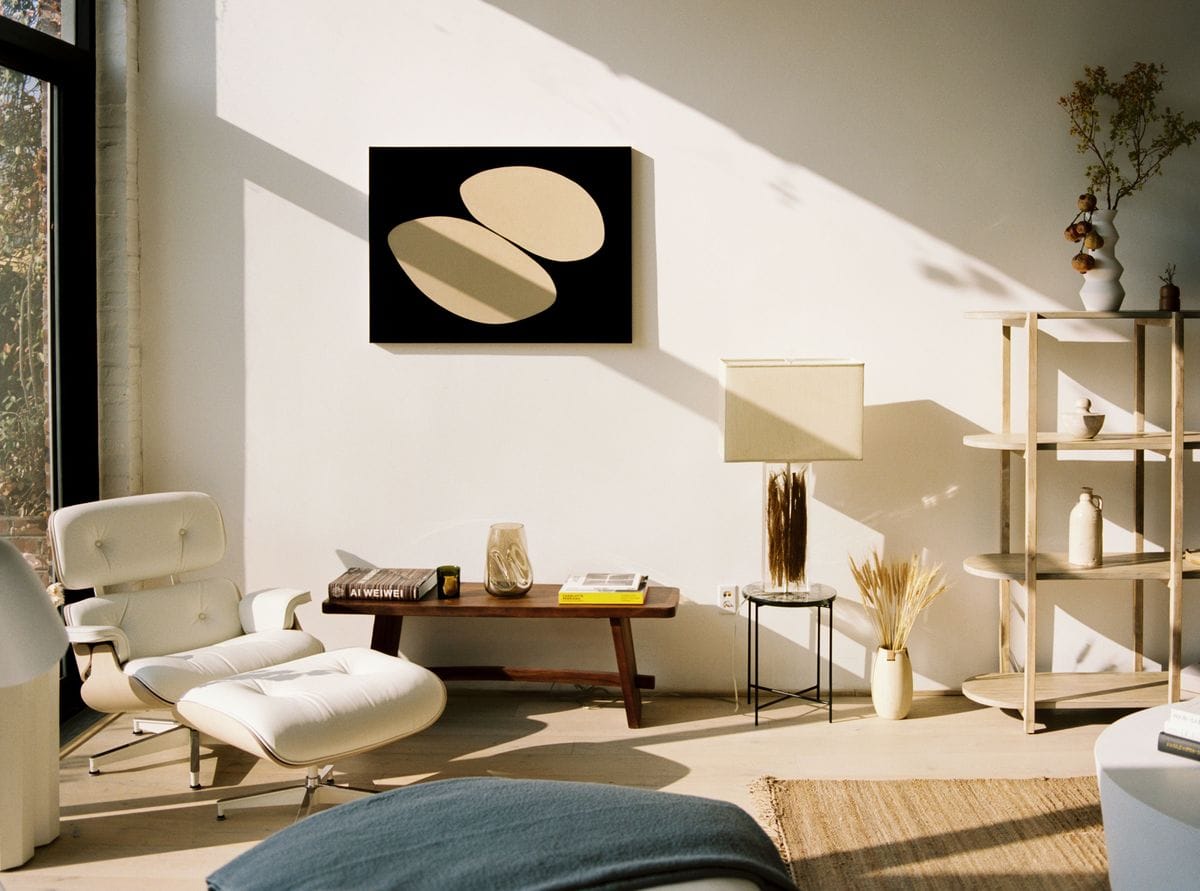
At its core, Japandi interior design is about finding balance. It's a visual and philosophical conversation between the Japanese and Scandinavian styles, each bringing its strengths to the table. The Japanese influence introduces a sense of wabi-sabi, an appreciation for the beauty in imperfection, while the Scandinavian touch adds the coziness and warmth known as 'hygge'. Together, they create interiors that are not only aesthetically pleasing but also deeply rooted in a philosophy that values simplicity and nature.
Natural Materials: The Foundation of Japandi Style
One of the most distinctive features of Japandi-style interiors is the use of natural materials. Wood is a staple in both Japanese and Scandinavian design aesthetics, often left in its natural state or finished with a light touch to showcase its inherent beauty. Bamboo, rattan, and wool are other organic materials commonly found in Japandi decor, providing a tactile experience that enhances the space feeling warm and inviting.
The Role of Natural Light
In Japandi design, natural light is not just an afterthought—it's a key element that shapes the space. Large windows are a hallmark of Scandinavian homes, and they play just as important a role in Japandi-style interiors. They invite the outside in, creating a seamless flow between the interior and nature. The soft diffusion of light through translucent shoji screens, a feature of traditional Japanese style, also helps to maintain a bright and airy atmosphere.
Clean Lines and Organic Shapes
The clean lines and organic shapes characteristic of Japandi interior design contribute to the uncluttered spaces that define this style. Furniture in Japandi-style homes often features simple, streamlined forms that are both functional and beautiful. This minimalist approach to design helps to create a sense of calm and order, making the room feel more spacious and open.
Minimalism Meets Warmth: The Japandi Approach
Have you ever walked into a room and felt an immediate sense of calm? That's the magic of Japandi, a design style that marries the minimalist approach of Scandinavian interior design with the warmth and naturalness of Japanese interior design. It's not just about decluttering your space; it's about choosing pieces that have purpose and bring joy. Scandinavian designers have long championed the concept of 'less is more', and when this is combined with the Japanese philosophy of 'wabi-sabi' – finding beauty in imperfection – the result is a home that feels both serene and lived-in.
In a Japandi-style home, every item is chosen with intention. This isn't a place for the ornate or the excessive. Instead, you'll find furniture and decor that serve a function while also adding to the overall aesthetic. Neutral colors play a big role in this design style, providing a soothing backdrop that makes the natural elements pop. Imagine a soft, dove-gray sofa paired with a simple, yet beautifully crafted, wooden coffee table. It's the kind of space that invites you to breathe deeply and relax, a testament to the power of blending two styles into one harmonious whole.
Fusion of Functionality and Aesthetics: Japandi Furniture
When it comes to Japandi, the furniture is where the two styles truly converge. Scandinavian hygge – the idea of coziness and comfort – meets the Japanese design help in creating pieces that are not just functional but also carry a sense of tranquility. A Japandi-style home features furniture with clean lines and organic shapes, devoid of unnecessary details. The focus is on craftsmanship and the quality of materials, with an emphasis on sustainability and durability. For instance, a dining table in light oak with simple, elegant chairs could be a nod to both Scandinavian practicality and Japanese simplicity.
Architectural Digest often showcases homes that exemplify this fusion, highlighting how the use of space is as important as the furniture within it. In a Japandi home, furniture is often low to the ground, which can make rooms appear larger and more open. This design choice is a nod to traditional Japanese interior design, where lower furniture is customary. By incorporating such elements, Japandi furniture not only serves its purpose but also becomes an integral part of the architectural expression of the space, blending form and function in a way that's both modern and timeless.
A Neutral Color Palette: The Canvas of Japandi Interiors
Japandi interiors are known for their neutral color palette, which includes earthy tones, muted colors, and soft textures. These neutral tones serve as a canvas, allowing the natural beauty of the materials and the clean lines of the furniture to stand out. The use of different textures adds visual interest and depth to the space, while the muted tones ensure that the overall look remains harmonious and soothing.
Incorporating Japandi Style into Your Home
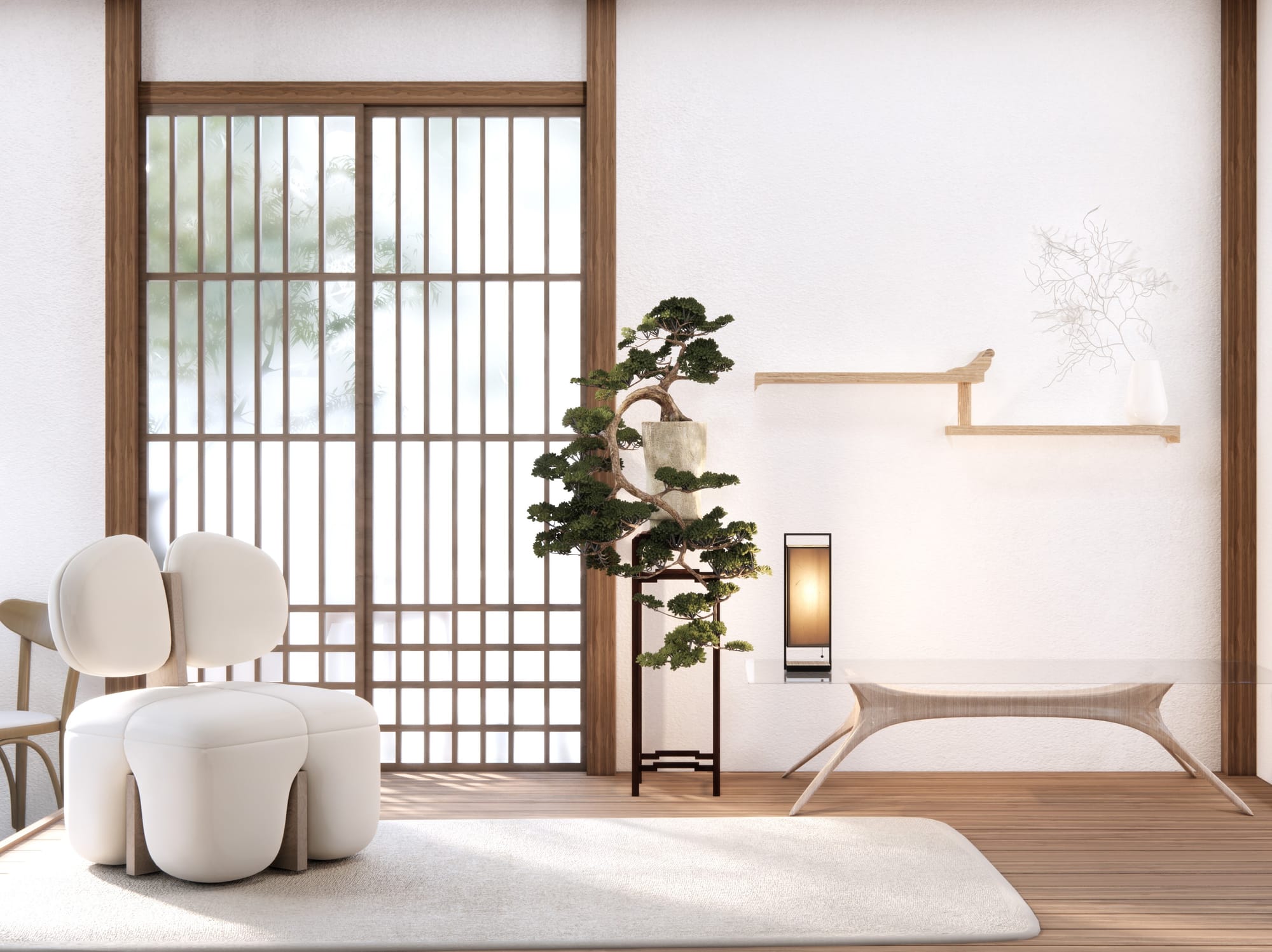
To incorporate Japandi style into your home, start by focusing on the essentials. Choose furniture that is both functional and aesthetically pleasing, with a focus on quality and craftsmanship. Opt for a neutral palette with earthy and muted tones, and add soft blankets and cushions to create a cozy and warm atmosphere. Remember, the Japandi design philosophy is about simplicity and functionality, so keep decorations to a minimum and let the space speak for itself.
Japandi Decor: A Blend of Art and Function
Japandi decor is not just about looks; it's about creating a space that is both beautiful and practical. Accessories are chosen with care, ensuring that each piece serves a purpose or brings joy. Japanese art, with its focus on nature and simplicity, is a perfect complement to Scandinavian design aesthetics, adding a touch of elegance and cultural depth to the space.
The Influence of Nature on Japandi Design
Nature plays a pivotal role in Japandi interior design. The use of organic materials and the emphasis on natural light are testaments to this. Plants are often incorporated into Japanese-style homes, bringing life and color to the neutral interiors. The connection to nature is not just visual; it's also about creating a space that promotes well-being and tranquility.
Japandi Style: A New Aesthetic for Modern Living
Japandi style is more than just a trend; it's a new aesthetic that responds to the needs of modern living. It offers a sanctuary from the chaos of the outside world, a place where one can find peace and clarity. The blend of Japanese and Scandinavian design principles results in a look that is both sophisticated and accessible, making it an ideal choice for those looking to create a home that is both stylish and comfortable.
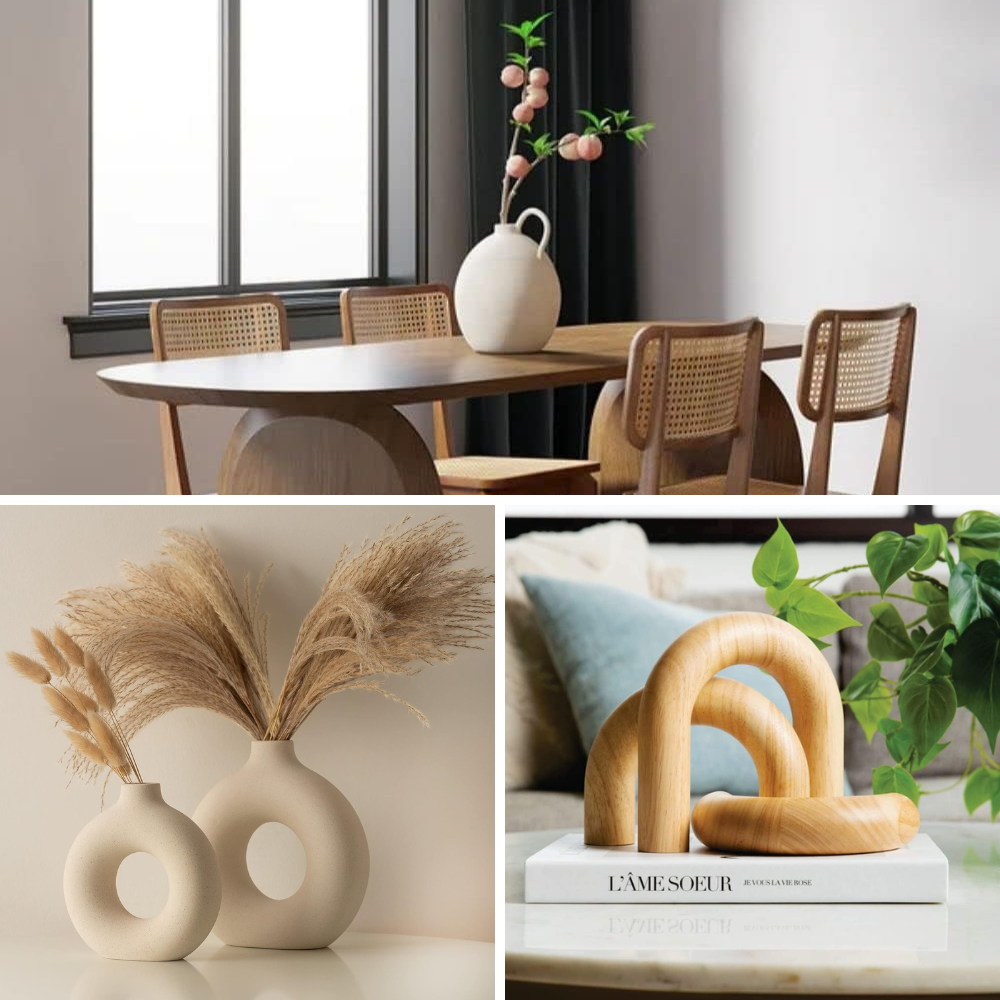

What is Japandi interior design?
Japandi interior design is a hybrid of Japanese and Scandinavian design styles that focuses on minimalism, natural elements, and creating a cozy and warm atmosphere. It combines the best of both worlds to create functional, uncluttered spaces that are aesthetically pleasing and comfortable.
How can I incorporate Japandi style into my home?
To incorporate Japandi style into your home, focus on using a neutral color palette, natural materials, and clean lines. Choose furniture that is functional and well-crafted, and keep decorations minimal. Embrace the principles of simplicity and nature by incorporating plants and maximizing natural light.
Why is natural light important in Japandi interior design?
Natural light is a key component of Japandi interior design as it enhances the space feeling open and connected to nature. Large windows and translucent materials allow for a bright and airy atmosphere, which is central to creating the tranquil and harmonious environment characteristic of Japandi-style homes.

Japandi interior design is a thoughtful fusion of Japanese and Scandinavian aesthetics, emphasizing minimalism, natural elements, and a cozy atmosphere. By incorporating natural materials, clean lines, and a neutral color palette, the Japandi style creates functional interiors that are serene and inviting. This design philosophy celebrates the beauty of simplicity and the importance of a connection with nature, making it a perfect fit for contemporary homes.
